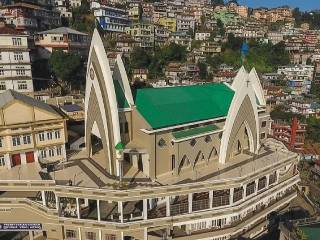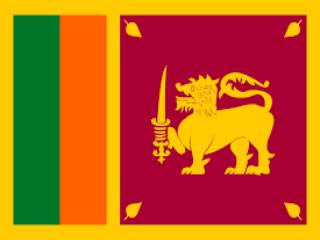There was a woman in Mahatma Gandhi’s life with whom he had contemplated ‘spiritual’ marriage. Rajmohan Gandhi’s recent book on the Mahatma more than hinted at this alliance. V.N. Datta, a historian who has been researching this relationship, talks to The Tribune and attempts to reconstruct the strong bond between Gandhi and Saraladevi, a niece of Rabindranath Tagore.
Who was Saraladevi Chowdharani and how did she impact the life of one of India’s greatest sons, Mahatma Gandhi? She stares poignantly out of the early 20th century black and white pictures, clad in rich silk sarees and her black hair flowing loose. Her bold, sharp features and intelligent eyes full of depth stare out of yellowed pictures. Calling out to unravel a strange story that was buried with her remarkable life, which took an unusual turn when the Mahatma stayed at her Lahore residence in 1919 when her Punjabi husband Rambhuj Dutt Chowdhary was in jail.
Saraladevi, the Bengali wife of Rambhuj Dutt Chowdhary, was no ordinary woman. She was exceptional in every way and was decades ahead of the time and milieu in which she lived. She belonged to the Tagore family. Her father Janakinath Ghosal was an important figure in the early years of the Congress movement and her mother Swarnakumari was an active figure in the Bengali literary field and the nationalist movement. Sarala was Rabindranath Tagore’s niece. Her large family comprised some of the most creative minds in pre-Independence India. They were involved with the arts and were writers, musicians, actors and painters. This combination left a massive impact on Saraladevi’s development.
Swami Vivekananda had once commented to Sister Nivedita that Saraladevi had the perfect education. Martin Greene in his book Gandhi: Voice of a New Age Revolution mentions that Sarala was educated at the Bethune school and then she studied physics at the Science Academy. After getting a degree in English, she went on to study French, Persian and Sanskrit. Sarala was an accomplished musician and poetess; she composed many patriotic songs and issued a collection of them, Satagan. In 1895, she taught at a school in Mysore for a year and returned only after falling sick. She edited Bharati for a year and was an active participant in the militant nationalist movement of Bengal. She attended meetings of societies that had all male members and presided over boxing and wrestling matches organised by her. She was probably the only woman leader in Bengal’s militant nationalist movement.
Vivekananda had wanted Sarala to accompany him on his sojourn to the US as a dynamic emblem of India’s nationalism but her family did not approve of this scheme. Sarala married Pandit Rambhuj Chowdhary in 1905 and shifted to Lahore where she continued her nationalist work with zeal. Her husband himself had a very high opinion of her and described her as the "greatest Shakti in India." This was the woman that Gandhi met in 1919, popularly called ‘Devi Chowdharani’ for her feminism and dynamism.
A clear hint of Sarala and Mahatma Gandhi’s unusual relationship is given in a recent book by Rajmohan Gandhi, Mohandas: A True Story of a Man, his People and an Empire . Rajmohan quotes from one of Gandhi’s letters written on October 27, 1919, and addressed to Anasuyaben in Ahemdabad: "Saraladevi’s company is very endearing. She looks after me very well." Rajmohan further adds that "the following months saw a special relationship that Gandhi called ‘indefinable’ after its character changed in June 1920. In between he had not only overcome his caution regarding exclusive relationships but even thought of a ‘spiritual marriage’, whatever that may have meant, with Saraladevi."
Rajmohan goes on to write that "for four to five months – between January and May 1920 – Gandhi was clearly dazzled by her personality and seemed to fantasise that providence desired them together to shape India to a new design. He wrote to her that he often dreamt of her and that she was a great shakti." During this period, Young India carried a song by Saraladevi on the front page and Navjivan published another poem by her along with Gandhi’s comments that it was perfect.
Here’s another quote from Gandhi’s letters (made available by Prof V. N. Datta, historian and writer) to Sarala dated May 2, 1920, "You will continue to haunt me in my sleep. No wonder that Panditji (Rambhuj Dutt) calls you the greatest shakti. You may cast that spell over him. You are performing the same trick over me." In another letter dated January 23, 1920, the Mahatma wrote, "Saraladevi has been showering her love on me in every possible way." The nature of their relationship is further uncovered in a letter dated August 23, 1920: "You are mine in the purest sense. You ask for a reward of your great surrender, well, it is its own reward."
Rajmohan writes that this relationship was causing a furore among Gandhi’s disciples and in the family. For instance, C. Rajagopalachari writes in a strong letter on June 16 that the contrast between Saraladevi and Kasturba was similar to that between "a kerosene oil Ditmar lamp and the morning sun." Asserting that Gandhi "had nursed a most terrible delusion," C.R added that, "the encasement of the divinest soul is yet flesh it is not the Christ but the shell that I presume to warn and criticise. Come back and give us life pray disengage yourself completely." It was really after the intervention of his son Devdas and Mahadev Desai, Mathuradas and Rajagopalachari that Gandhi came around to giving up on his tryst of 1919-1920 with Saraladevi. Gandhi later told Father Lash: "It was their love which chained me so tightly and strongly and saved me."
Saraladevi later complained (quoting Rajmohan) that she had "put in one pan all the joys and pleasures of the world, and in the other Bapu and his laws, and committed the folly of choosing the latter." She demanded an explanation that Gandhi gave in a rather revealing letter dated December 1920, "I have been analysing my love for you. I have reached a definition of a spiritual marriage. It is a partnership between two persons of the opposite sex where the physical is wholly absent. It is therefore possible between brother and sister, father and daughter. It is possible only between two brahmacharis in thought, word and deed.
"Have we that exquisite purity, that perfect coincidence, that perfect merging, that identity of ideals, the self-forgetfulness, the fixity of purpose, that trustfulness? For me I can answer plainly that it is only an aspiration. I am unworthy of that companionship with you. This is the big letter I promised."
Martin Greene has further explored this relationship in his book giving 14 pages to it and he writes quite explicitly: "Her relationship with Gandhi is worth studying because it was personal to a more striking degree than his other relationships. It was erotic, in the sense the word carried when applied to novels. The letters between them that survive do not express the alliance of comrades but a love relationship." Martin further writes, "It seems clear that – whether consciously or not – Gandhi was tempted to take over, or marry to his own purposes, the dynamism of pre-1910 Bengal. He had done so in the matter of Swadeshi, and he was tempted to do so in the matter of Saraladevi, the embodied Durga." Martin adds that "he and she together would certainly have made an extraordinary political phenomenon. But their personal relationship was a bit unstable."
Professor Datta, who has been researching Gandhi and Sarala’s relationship for a while mentions to The Tribune, "There is no doubt that Gandhi was drawn to her and dazzled by her, this is mentioned by both Rajmohan and Martin. At that time she was 47 and he was 50 years of age. From October 1919 to March 1920, Gandhi stayed in Lahore and she later visited Sabarmati several times. There was much talk of their relationship, whisperings, innuendos, etc and this relationship was terminated by the efforts of Devdas Gandhi, Mahadev Desai and especially Rajagopalachari in June 1920, when the latter sent a letter to Mahatma Gandhi, asking him to hold back."
"I think we do not hear Sarala’s voice anywhere," asserts Datta, adding that the writers too have overlooked the historical context. "Also Gandhi had been experimenting with celibacy, reading Patanjali and doing introspection. He wanted to achieve complete control over sexual impulses but Sarala came in the way. Now from his correspondence, it can be assumed he retreated from the relationship not only because of family influence but also because he could not meet the ideal of her being his spiritual wife and of their having a spiritually pure relationship with no physical overtones. He writes quite clearly that ‘I am too much physically attached to you and you have too many weaknesses. I am not worthy of you because I have not reached that stage where carnal desires have been satisfied.’" Datta stresses, "Gandhi stumbled and fumbled and he felt he had not reached the great spiritual heights of Patanjali and he felt he had not been able to eliminate sexual urges."
Datta adds, "And what of Sarala, she was really an independent-minded woman who wanted to know where she stood with Gandhi in her relationship with him. She later complained that she gave up her prestige, her social responsibilities, and moral traditions but for what. She possibly wanted a marital relationship and some legality to what they shared and did not want to be a stooge or a guinea pig or a cat’s paw and she wanted a clear space for herself in his life and she was utterly uncompromising on this."
Sarala’s husband died in 1923 and she shifted to Calcutta with her son. In 1935, she renounced the world, finding a guru and taking to spirituality. "Her entire life was ruined and destroyed," says Datta, "Gandhi’s indifference after their parting and his silence is complete. He never looked back at her again."
Almost the Mahatma allowed himself to smell from afar the fragrance of the rose of love but never allowed himself the luxury of making it a part of his life. But, then the man sacrificed everything. Did not he?
Source:http://www.tribunei ndia.com/ 2007/20070602/ saturday/ main1.htm
Related HJS section
> Truths of Gandhi




